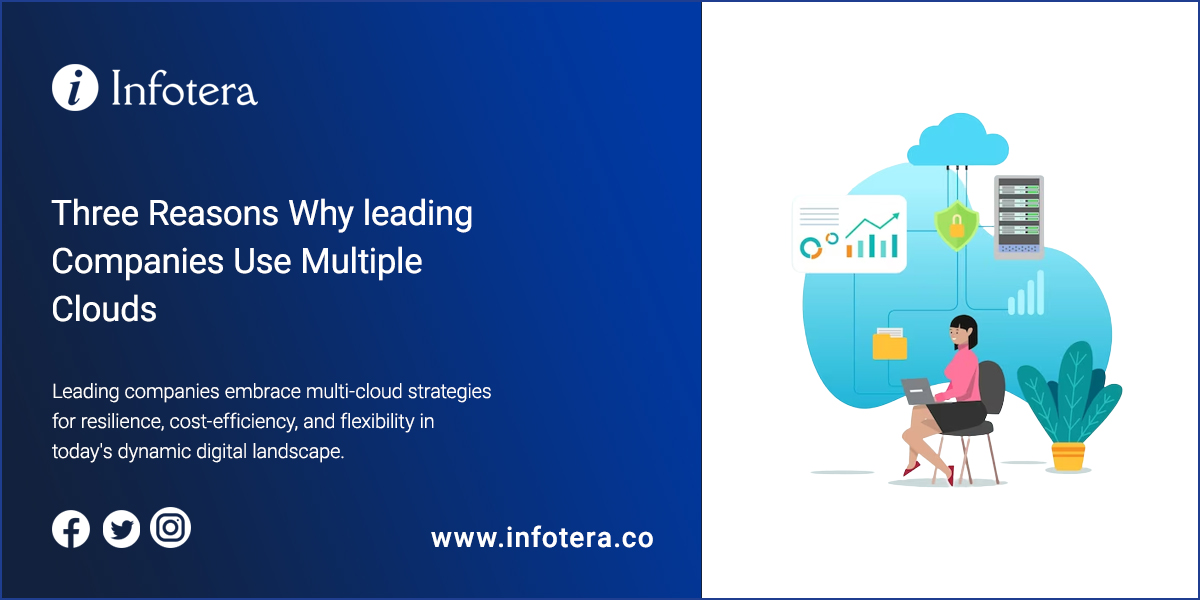The adoption of cloud computing has grown exponentially over the past decade. Cloud platforms like AWS, Azure and Google Cloud provide scalable, flexible and cost-efficient solutions for organizations of all sizes. However, an increasing number of enterprises are now utilizing multiple cloud providers rather than relying on just one.
There are several key reasons why leading corporations are taking a multi-cloud approach:
1. Avoiding Vendor Lock-In
One of the major reasons for adopting a multi-cloud strategy is to avoid over-reliance on a single vendor. Having all your data and workloads within a sole provider’s cloud ecosystem leads to vendor lock-in. This makes it extremely difficult to then migrate services or platforms to another provider.
By utilizing infrastructure and services from different vendors, companies prevent lock-in and remain in control. They can freely move applications between cloud platforms as required and even negotiate better deals by keeping providers competitive.
Leading corporations recognize the strategic and economic risks of relying solely on one vendor. A multi-cloud approach creates redundancy and allows seamless migration if needed.
2. Utilizing the Best Services
The major cloud platforms each have their advantages, specializations and superior services compared to competitors. By adopting multiple clouds, companies can utilize the unique strengths of each platform.
For example, an organization may use AWS for server less computing and databases but also leverage Google Cloud for AI, machine learning and analytics services. This best-of-breed approach allows the flexibility to deploy workloads suited to a particular cloud’s capabilities.
Rather than being limited to the tools and features of a single provider’s ecosystem, enterprises can mix and match the ideal services for their objectives across several clouds.
3. Mitigating Downtime and Data Loss Risks
Having all workloads and data within a single cloud exposes the business to significant risk if that platform experiences outages or failures. By spreading services across multiple clouds, leading enterprises ensure greater continuity and resilience.
If one cloud platform goes down, applications and data housed in the other environments will remain operational. This dramatically reduces potential downtime and disruption. Critical systems can fail over to another cloud if needed.
Likewise, housing data across diverse geographic locations and providers limits the impact of data loss. If an incident occurs with one provider, data remains intact and accessible in the other cloud(s).
Leading corporations recognize the vulnerabilities of relying on only one cloud vendor. A multi-cloud architecture provides the redundancy and resilience necessary for mission-critical systems and data.
Key Considerations When Adopting a Multi-Cloud Model
While utilizing multiple clouds has clear advantages, it also creates complexity around management and integration. Key considerations include:
- The ability to seamlessly migrate data/applications between cloud platforms
- Managing security policies, access controls and compliance across providers
- Monitoring performance and spend across multiple cloud accounts
- Ensuring interoperability between platforms and services
The benefits can outweigh the management overhead but organizations should have strategies to maximize efficiency and visibility across all clouds utilized.
The Future is Multi-Cloud
Leading businesses are recognizing the powerful advantages of utilizing multiple cloud platforms, and this trend will only accelerate.
The ability to avoid vendor lock-in, leverage diverse services and build in redundancy makes a compelling case for adopting a multi-cloud architecture.
While not without challenges, the benefits strongly outweigh the alternatives. Forward-thinking companies will be prepared to leverage the strengths of all major cloud providers.

